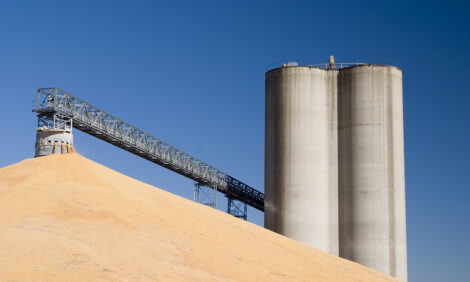



Western Canada Remains Low Cost Hog Production Region
CANADA - The Manager of industry and policy analysis with Sask Pork says, despite the current downturn in profitability, western Canada remains one of the lowest cost regions of the world to raise hogs. writes Bruce Cochrane.A combination of increased feed costs due to drought in the United States and low hog prices which has eroded profitability is being blamed for two of western Canada's largest pork producers filing for bankruptcy protection.
Because of drought US corn prices have climbed to over eight dollars per bushel fueling a corresponding rise in feed markets in western Canada pushing losses in western Canada to about 60 dollars per hog.
Mark Ferguson, the manager of industry and policy analysis with the Saskatchewan Pork Development Board, acknowledges with barley at just under five dollars a bushel and feed wheat at over seven dollars a bushel profitability is being impacted.
Mark Ferguson, from Saskatchewan Pork Development Board says: "It's important to remember that the hog business is a cyclical one and we do have seasonal and multi-year price fluctuations that do impact profitability and by May of next year we expect most producers to be back into positive cash margins so there's definitely going to be better times ahead.
"Western Canada has always been a low cost region in the world to produce hogs and we don't think anything has changed in terms of that.
We can't lose sight of the natural advantages that western Canada has in terms of producing hogs.
"This relates to the amount of feed available, the amount of space available, our productivity advantage and now we have excess packing capacity as well so we have tremendous natural advantages in western Canada that do give us a lower cost of production and that's going to be important if we are going to be producers of hogs in the future."
Mr Ferguson says, with current North American industry losses, there will be herd liquidations and fewer markets hogs on the ground by next summer.
He encourages producers to keep an eye on markets and watch for any opportunities to lock in higher hog prices and for any indications that feed costs will start to come down.








